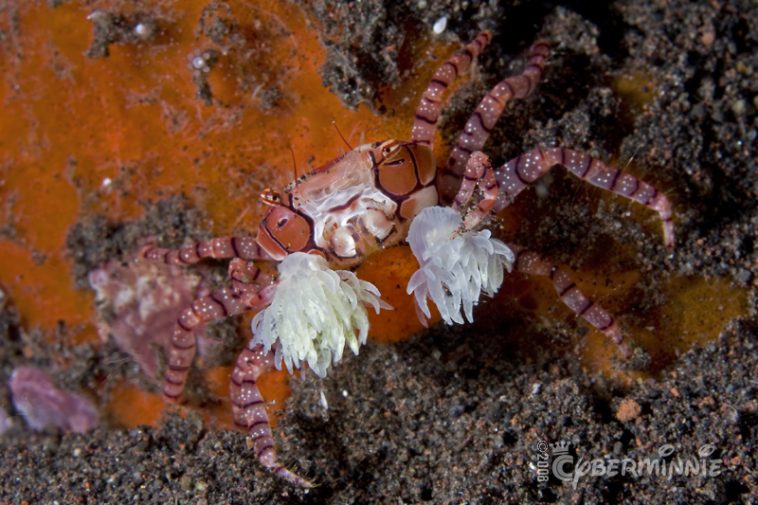
Boxer crabs feed sea anemones in exchange for defense from danger — serving as a prominent example of symbiosis in the animal kingdom.
Lybia tessellata is a tiny crustacean native to the tropical Indo-Pacific Ocean. These crabs are usually patterned with pink, brown, or yellow and reach about an inch in width. They bear slim claws and a front pair of walking legs that are longer than the other three pairs.
These crustaceans spend most of their time attached to reefs in shallow waters. They are known as ‘pom-pom’ or boxers crabs due to their unique presentation of sea anemones, which live attached to the crab’s claws and are often wielded similarly to ‘pom poms’ or boxing gloves.
Sea anemones are brightly colored cnidarians with simple digestive systems and a single body cavity surrounded by dangerous tentacles.
The tentacles are covered in stinging cells called cnidocytes which act as defensive mechanisms and can assist in the capture of prey.
Boxer crabs and sea anemones form one of the most unusual and astounding symbiotic relationships in the entire animal kingdom. These crabs wield sea anemones attached to their claws in horizontal motions as they move. This colorful display serves as a natural deterrent to predators, and when directly threatened, the crab will utilize the sea anemone in a forward, ‘punching’ movement towards the aggressor. The sea anemone’s stinging tentacles serve as the ultimate defense mechanism for the crab.In exchange for this defense, boxer crabs feed their helpful partners. The crabs utilize the sea anemone’s tentacles to collect food particles then subsequently digest the debris and provide adequate meals in return, making for the most unlikely and amazing friends.




